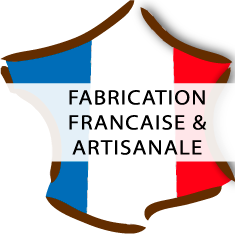An outdoor fireplace to heat the outdoor space
Plants play the main role in our outdoor area whether we’re talking about a garden, a terrace, a patio or a balcony. Not only do they aesthetically enhance those spaces, but they also improve the climate regulating humidity levels and absorbing latent heat from the outdoor area in summer. More, plants can function as screens ensuring privacy. To keep them properly you need planters that can host the roots while highlighting foliage beauty. Planters are an extension of normal vases. They were designed to create vegetation strips putting together more than one plant.
Since they’re bigger than normal vases, they’re usually made of more resistant materials to withstand the pressure of the soil in them. The materials used are concrete, GRC, reinforced plastic or metal. When choosing the material take into account whether you want to move the planter or leave it in fixed position. In the first case, choose a reinforced plastic or fiberglass planter maybe with casters. In the second case you can choose whichever material you want.
”A vase of unbaked clay, when broken, may be remoulded, but not a baked one.” (Leonardo da Vinci) Outdoor vases decorate gardens, terraces, balconies and patios making them nice to live in while enhancing the climate. Plants improve the microclimate, purify air, regulate humidity and decrease noise. In inhabited spaces they reduce polluting gases like CO2, NOx, CO, SO2, O3 and atmospheric particulate. Choosing the right vase for our plants determines their durability. The wrong shape, material and color could make the plants die in no time. The first thing to consider is certainly the material. The market offers different kinds of material: classic terracotta, plastic, metal, wood and stone.
Terracotta is the most used material because clay is porous and lets water evaporate. The pores in the clay may also let fungi and bacteria into the vase and in the soil. Also plastic is a very common material because it’s light and very unexpensive. Plastic doesn’t let water through and that may cause the roots to go rotten because the soil doesn’t drain fast enough. Other materials like wood, stone and metal are prefered as vase holders and not like plant holders. The second factor to take into account is the size.
If the vase is too small the plant suffers while if it’s too big you will have to use too much water. Nurserymen say that you choose a vase on the basis of the plant’s growth speed so you better get information about the plant when you buy it. Also the color is important. A pale color will reflect sunlight so it will keep earth cooler while a vase in darker colors will absorb sunrays making the inner part of the vase warmer. Ask the nurseryman which is the best compromise between the right color and good looks....
If you are passionate with plants and flowers, garden greenhouses will be the perfect scenario where to nurture your hobby in any season. The first structures of this type had already been conceived in 1400 when people came to realize that for some specific kinds of plants typical of hotter climates, a space where to maintain a certain temperature was necessary, even in the coldest temperatures or latitudes. In the centuries thereafter, starting from 1700, garden greenhouses became spaces purposely and artfully planned, rooms plunged in the green of nature where not only to do gardening, but also meant to sip a hot tea or hold events.


commentaires
Aucun commentaire pour le moment!
laisse ton commentaire